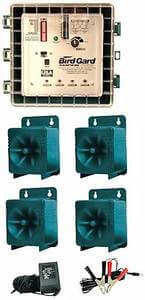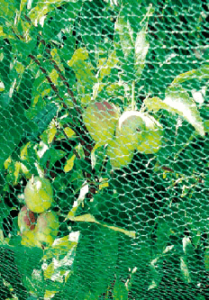In this article, we briefly discuss the main characteristics of fig cultivation. We focus on maximizing the profitability of these crops by avoiding the biggest challenge during fruit ripening and harvesting: bird attacks, particularly from starlings (Sturnus vulgaris). To achieve this, we explain how to repel starlings from fig trees and present the Bird Gard Starling Repeller.
Farmers and cooperatives engaged in fig cultivation are well aware that fig cultivation has exceptional commercial potential. However, to enhance profitability, more efficient cultivation systems are necessary.
Main characteristics of fig cultivation
The fig tree
Fig cultivation is perfectly adapted to the Mediterranean climate as it tolerates high summer temperatures well. Fig trees have a large canopy and can reach a height of up to six meters. They prefer healthy, well-aerated, and slightly chalky soils, although they can also adapt to poorer soils.
Generally, there are two main types of fig trees:
- Common fig trees, which produce a single harvest of figs in August-September
- Breba fig trees, which yield a harvest of breba figs around June-July and a second harvest of figs in August, September, and October. Figs are the main crop.
The fruits: fig and breba
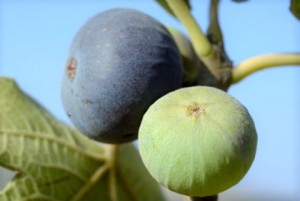
Fig fruits have a high fiber content and are a great source of minerals and vitamins. They also help prevent heart diseases.
Both figs and breba figs can be consumed fresh, but due to their perishable nature, they are also consumed dried or processed.
Figs and breba figs differ in their ripening dates. Figs ripen in the months of August, September, and October, while breba figs ripen in June and July. In reality, breba figs are fruits that don’t fully ripen in autumn each year and are preserved during winter to ripen the following summer. Hence the famous saying “once in a blue moon,” as it takes exactly 8 months between the ripening of the two!
Main fig-producing regions
Globally, Turkey leads in fig production. In the European Union, Spain is the main producing country, exporting around 2,000 tons of fresh figs and 3,000 tons of dried figs. The main destinations for these Spanish exports include:
- France, as the main market for fresh figs, with notable products such as Breva de Albatera and Higos de Almoharín
- Portugal, Mexico, and the United States for dried figs
In Spain, Extremadura leads in fig cultivation, followed by Andalusia, the Balearic Islands, and Castilla La Mancha. Other regions such as Valencia and Castilla y León also have highly productive fig crops in irrigated lands.
Maximizing profitability in fig cultivation
Fig cultivation has a great potential for commercial development due to several reasons:
- Increase in demand: There is a growing worldwide consumption of this delicious fruit.
- Increasing interest in fresh figs as a complement to the dried fig market.
- High market prices that figs can fetch.
Fig trees have traditionally been considered low-maintenance, requiring only the collection of ripe fruits. It is true that fig trees are not greatly affected by serious pest and disease issues. However, to maximize profitability in fig cultivation, advancements in more efficient cultivation systems are necessary.
The biggest problem that fig crops face during fruit ripening and harvesting is bird attacks, especially from starlings, which can decimate entire fig plantations.
How to prevent starling attacks in fig crops
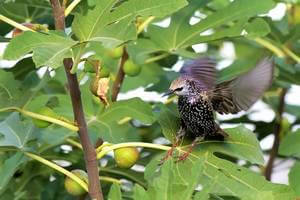
Starlings can decimate entire fig plantations by pecking at the fruits without consuming them, ruining the harvest. To prevent these attacks and maximize crop profitability, the implementation of bird protection systems is necessary:
Repel Starlings with Audible Sounds
The most effective solution to prevent Starling attacks in large fig crop areas is the BirdGard Super Pro Starling Repeller with chip #61, which operates with audible sounds. This starling deterrent covers an area of up to 24,000 m2 (2.4 hectares).
If the fig crop requires less or greater coverage, there are other models of Bird Gard Starling Deterrents available to suit specific anti-bird coverage needs:
- BirdGard Pro with chip #61 for starlings. Covers up to 6,000 m2. That is 0.6 hectares.
- BirdGard Pro Plus Starling Deterrent with chip #61. Covers up to 12,000 m2. That is 1.2 hectares.
- BirdGard Super Pro Amp Starling Deterrent. Covers up to 120,000 m2. That is 12 hectares.
Bird Gard Repellers – Key Features
All of these models of Bird Gard Starling Repellers share the following features:
- They cover large areas of land, making them especially suitable for use in agriculture, fruit-growing, and livestock farming.
- They are weather-resistant. They are specially designed for outdoor use.
- The sounds from the Bird Gard Starling Deterrents do not affect livestock or pets. Domestic animals and livestock quickly become accustomed to the sounds of the Bird Gard starling deterrent and are not affected by them.
- They come with a 30-day money-back guarantee if you are not satisfied with the results. BirdGard has many years of experience with these devices and we know they are highly effective. This guarantee instills confidence in the customer.
- They are very easy to install. No specialist technician is required.
- They are fully programmable, with volume settings, sound combinations, and operating modes for day, night, or 24-hour use. They include different functions that randomly vary the sound, sound duration, and time interval between sounds.
- You can reuse the same Bird Gard bird deterrent to repel various bird species by simply changing the sound card. The deterrent comes configured with a specific sound card/chip for the type of birds you need to repel. The sound card is located at the front of the device and is easily replaceable for protection against a greater number of bird species, such as sparrows, Argentine parrots, crows, and more.
- Starlings do not become accustomed to the sounds. You can use the device continuously, year after year. Unlike propane cannons, Bird Gard deterrents emit sounds randomly and in a completely unpredictable pattern.
- They are completely environmentally friendly and bird-friendly. Bird Gard bird deterrents effectively repel bird pests in an economical and efficient manner without causing any harm to the birds or the environment, in a natural way.
Sounds to Repel Starlings
Bird Gard bird deterrents come pre-programmed with a specific sound chip for the type of birds you want to deter.
The #61 chip is specifically designed to repel starlings. It contains a combination of 8 different sounds, including starling distress calls, along with sounds of three different predators: the hawk, the sparrowhawk, and the eagle.
Starlings, like many other birds, emit distress and alert calls to warn the rest of the flock of danger.
The Bird Gard starling deterrent accurately reproduces these starling distress calls, causing starlings to become frightened and immediately flee the area.
These starling distress calls are combined with sounds of hawks, sparrowhawks, and eagles, which are natural predators of starlings. This instills fear in starlings, causing them to leave the area.
Antonio L. Sanchez Calzada, from “Finca La Granja” in the province of Zamora, testifies to this:
“In previous campaigns, we had tried different protection systems, including sonic deterrents with multidirectional and randomly programmed explosions (cannons), without achieving the expected results, as the birds became accustomed to the explosions and continued to attack the vineyards.
In the current campaign, we have installed two BirdGard Super Pro systems and one BirdGard Pro system, with excellent results as the starling pest has completely disappeared. The systems have not only protected the vineyards from the bird infestation but have also benefited the nearby livestock facilities where the starlings used to go to feed until the grapes were ripe. This situation caused both losses in the amount of feed and its quality (contamination from droppings).”
Antonio L. Sanchez Calzada: “Finca La Granja” in the province of Zamora
Propane Cannons
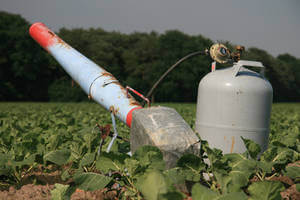
Propane cannons use a rudimentary method of emitting loud explosions constantly and repeatedly. Birds tend to become accustomed to them and they become less effective in the long run.
Protective Nets
Anti-Bird Nets cover the fig trees, creating a physical barrier. It is important to choose the correct size of the anti-bird netting based on the size of the bird and to install it properly to avoid damaging the tree.
If the anti-bird netting is too fine, it can block sunlight and hinder the proper ripening of the fig.
In large-scale cultivation, anti-bird nets are the most expensive method of bird protection in terms of initial investment and the work required to install, maintain, and remove the nets for each harvest.
How to Repel Starlings from Fig Trees – Key Takeaways
- The cultivation of fig trees has exceptional potential.
- The greatest damage to fig tree crops comes from bird attacks, especially starling infestations, which can decimate entire plantations.
- The most effective solution to prevent starling attacks in large fig tree crops is the BirdGard Super Pro Bird Deterrent with the #61 chip.
The following articles are testimonials from BirdGard Iberia customers who use BirdGard bird deterrents to repel starlings and blackbirds:
- The article “The Government of La Rioja acquires Bird Gard bioacustic repellers for bird control” explains the reference of the Government of La Rioja in the use of BirdGard sonic bird deterrents with the #61 chip.
- Dr. Martínez, Director of the Viticulture Group at CSIC (Spanish National Research Council), shares her experience with different methods to scare birds away from the vineyard.
- Jose Luis López Budia, a farmer in Cifuentes, explains how he has managed to protect his almond trees from woodpecker attacks and his cherry trees from flocks of starlings.
- Bird deterrents used to minimize micro power cuts caused by starling flocks on power lines. Reference: Iberdrola.
- Experience from one of BirdGard Iberia’s customers using the Bird Gard Pro bioacoustic bird deterrent to repel starlings at their resort in Mahón.
- Check out other Customer References from BirdGard Iberia
If you have any questions about which type of birds are attacking your crop, we recommend the article “Differences between Starlings, and Blackbirds.”
If you need advice on which starling repeller is most suitable for your case, do not hesitate to contact us. One of our technicians will advise you on the most appropriate solution for your case.
